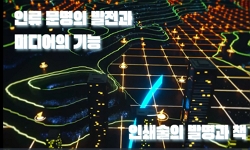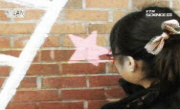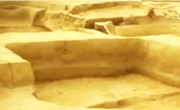The extant condition of a part of a wall mural painting excavated on the outside of the west stylobate in the central court main hall of the Mireuksa temple site(彌勒寺址). From an examination of twelve pieces of the mural wall painting the method...
http://chineseinput.net/에서 pinyin(병음)방식으로 중국어를 변환할 수 있습니다.
변환된 중국어를 복사하여 사용하시면 됩니다.
- 中文 을 입력하시려면 zhongwen을 입력하시고 space를누르시면됩니다.
- 北京 을 입력하시려면 beijing을 입력하시고 space를 누르시면 됩니다.

미륵사지 출토 벽화편의 제작기법과 제작년대-중원(中院) 김당지(金堂址) 출토품을 중심으로- = An Examination of the Production Method and Dating of a Portion of a Wall Mural Painting Excavated from the Mireuksa Temple Site -Artifacts of the Central Court and Main Hall-
한글로보기https://www.riss.kr/link?id=A100320880
- 저자
- 발행기관
- 학술지명
- 권호사항
-
발행연도
2014
-
작성언어
-
-
주제어
미륵사지 ; 벽화 ; 백제 ; 발해 ; 통일신라 ; Mireuksa temple site ; wall mural painting ; Baekje ; Balhae ; Unified Silla
-
KDC
900
-
등재정보
KCI등재
-
자료형태
학술저널
-
수록면
35-71(37쪽)
- 제공처
-
0
상세조회 -
0
다운로드
부가정보
다국어 초록 (Multilingual Abstract)
The extant condition of a part of a wall mural painting excavated on the outside of the west stylobate in the central court main hall of the Mireuksa temple site(彌勒寺址). From an examination of twelve pieces of the mural wall painting the method of production, the type of patterns, the date of production, and original appearance were gleaned. First, in terms of the production method, rice straw and quartz-like white stones mixed with clay between the back and front side were spread and then sandy clay with coated over the top. After the top was lime washed in white, patterns were drawn on the extreme outside using black, red, and white pigments. White lime was painted on the upper part in several layers. This is a shared element of the wooden structures of Buddhist temples of Baekje(百濟), Balhae(渤海), China and Japan. However, the main hall of the central court at the Mireuksa temple site as with the excavated pieces of mural paintings from the rubbish heap of the Jaeseoksa temple site and the temple site of the Sanggyeong-seong Fortress(上京城) of Balhae, remains of the framework or lattice sticks across the roof of the rafters but there is no evidence of a straw rope woven together. This was damaged by fire and due to the cause the possibility is that the extant was excluded. The confirmed patterns drawn on the excavated mural painting piece from the Mireuksa temple site include bamboo, flower designs, and unknown geometric designs. Among these, the bamboo and flower designs are similar to the seventh century bamboo and linden type designs of the early Tang(唐). In addition, it is possible that these kinds of designs and the subject matter of sutra paintings and related images is flatter. Moreover, the bamboo is very similar to that of the bamboo that is drawn on the Okchung Juja(玉蟲廚子) of seventh century Japan. However, it is not possible to surmise the entire images of the wall mural painting because of the small number of pieces. It is possible to estimate the dating of the wall mural painting because of the layer of the excavation and the associated artefacts. The pieces of the wall mural painting were recovered together with Unified Silla roof tiles and Baekje roof-end tiles. The layer from which the wall mural painting was excavated is not only clearly different with that of the north side stereobate layer of the partially disturbed layer from which Goryeo(高麗) Period artifacts were excavated, both layers have a different aspect. It is clear from the results of archaeological excavations that the mural painting and artefacts correspond to Baekje or perhaps Unified Silla(統一新羅) rather than Goryeo.
동일학술지(권/호) 다른 논문
-
- 한국고대학회
- 최욱진 ( Wuck Jin Choi )
- 2014
- KCI등재
-
- 한국고대학회
- 주홍규 ( Hong Gyu Ju )
- 2014
- KCI등재
-
중원지역 삼국시대 유적의 보존현황과 개선방안 연구 -충주를 중심으로-
- 한국고대학회
- 황보경 ( Bo Kyung Hwang )
- 2014
- KCI등재
-
미륵사지 출토 벽화편의 제작기법과 제작년대-中院 金堂址 출토품을 중심으로-
- 한국고대학회
- 양은경
- 2014
- KCI등재




 스콜라
스콜라






